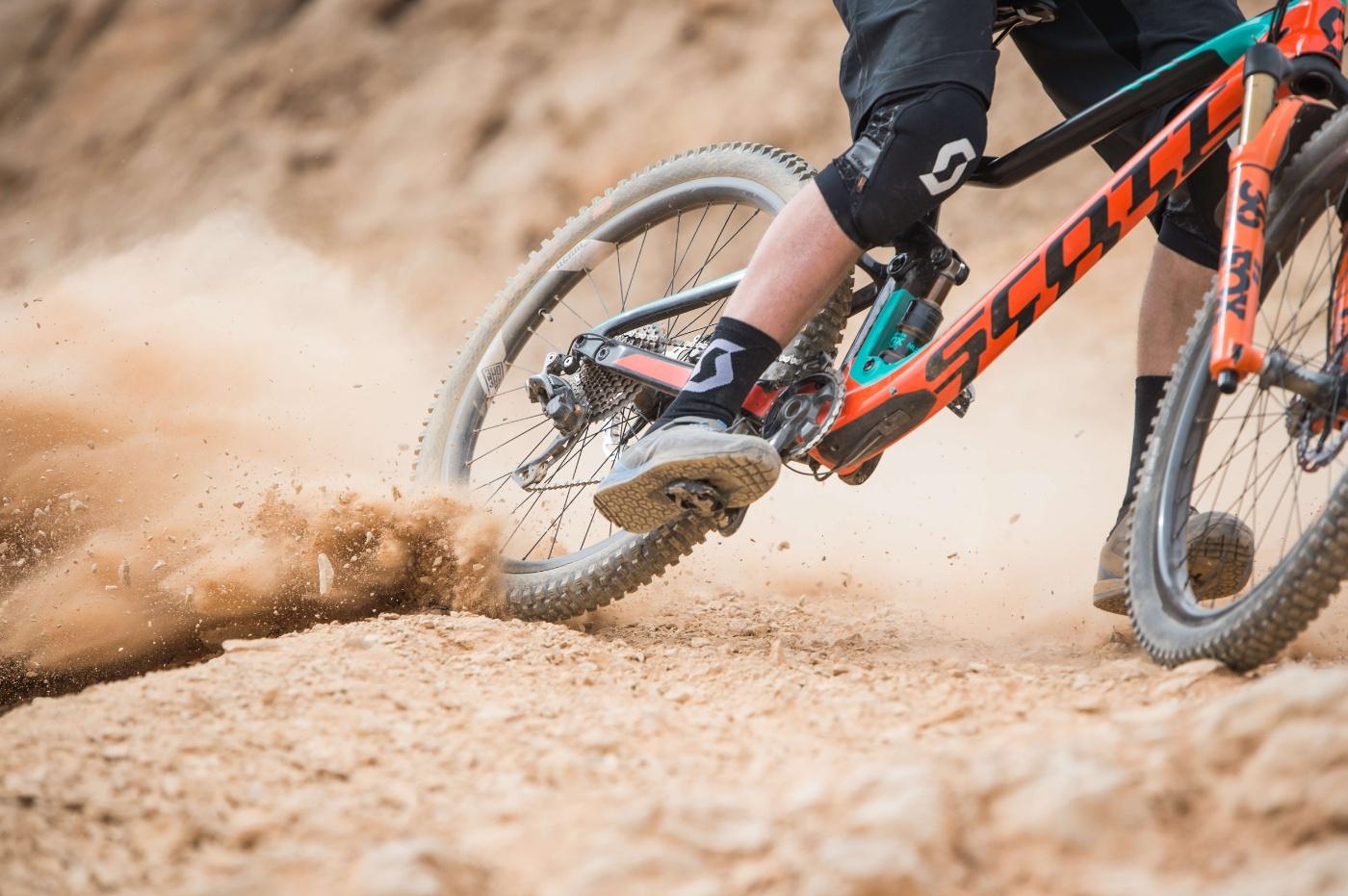
News
Bikes: Tires for the future
Modern bicycle tires fulfill a whole range of seemingly contradictory requirements. And the inventors are far from finished with their ideas. Photo: © Schwalbe
Modern bicycle tires fulfill a whole range of seemingly contradictory requirements. And the inventors are far from finished with their ideas. Photo: © Schwalbe
A tire is not simply a tire. A tube is not simply a tube: Thanks to exciting innovations, what are probably the most important parts of the bike can do a whole lot more than ten years ago. Amongst other things, tubeless technology and digitalization have meant that their performance capability has risen massively.
As you glide along on your bike, the sun in your face, the countryside slipping past and the wind in your back providing additional impetus, then it’s the tires and tube that are largely responsible for your progress. Heavy tires with a pronounced profile slow the bike down dramatically. A lightweight combination of wheel, tube and tire with low rolling resistance seem to propel the bike forward. But in the early days, everything was fairly heavy going.
From the wooden wheel to the rubber tire
The first bikes, 135 years ago, ran on wooden wheels, just like the first cars, which looked like horse-drawn carriages. Charles Goodyear, John Dunlop and Édouard Michelin made their contribution in around 1900 to ensuring that rubber tires are standard on bikes today. We associate their names with major tire manufacturers. Around the same time, Continental was the first German manufacturer to develop pneumatic tires.
100 grams – it’s not just the professionals who notice the difference
The two most well-known and most popular types of tire nowadays are the wired-on tire and the folding tire. A wired-on tire is where the rubber mix incorporates wires to guard against punctures. The folding tire is a further development, where the wires are replaced by thin, light, but strong Kevlar threads. That saves weight. Although in most cases it is only around 100 grams, the tire – like the wheel – is part of the rotating mass on the bike: The faster this can be made to move, the faster and nippier the ride on the bike. And it’s not just the professionals who notice the difference.

Bike looking for tube
The drive to reduce weight has led to an exciting innovation: The tubeless tire. In this case there is no tube, and the air is simply held in the tire. Thanks to the absence of friction between tube and sleeve, rolling resistance is lower. But of course, that also places greater demands on the material, often making it more expensive to procure. Continental recommends tubeless technology only for mountain bikes, because those tires are bulkier than on city bikes or road bikes, and as a result fitting them is easier. What’s more, they enable riding at under 2 bar tire pressure, which is an advantage when riding off-road. By comparison, road bikes are commonly ridden at pressures of 8 bar and above. Moreover, tubeless tires are more puncture-resistant: A special liquid sealant is filled into them which rapidly closes the hole again in the event of a minor puncture. However, this liquid sealant needs to be replaced at regular intervals.
The tube gets even lighter – and digital
Driven by tubeless technology, bike tubes have evolved further. For instance, you can also get the standard Continental MTB rubber tube in a “light” version that is 100 grams lighter. Manufacturers are also experimenting with other materials to undercut the competition, and always with the aim of reducing the weight. Michelin, for example, is offering road bike tubes in latex, weighing a maximum of 82 grams. It’s a similar situation with the Aerothan tube brought out by the German tube specialist Schwalbe. This lightweight amongst tubes weighs just 41 grams, depending on the model. The Austrian manufacturer Tubolito has launched a tube in thermoplastic (a type of plastic) in a striking orange color, weighing just 33 grams and yet very durable, according to the manufacturer.
A further innovation which the Austrians have helped to drive forward is the digitalization of measuring tire pressures. Tubolito has a tube in its range that comes equipped with a light NFC chip, of the kind we are familiar with on bank cards. The NFC chip is read off from an app, which displays the precise tire pressure. Not quite so concealed is the Airspy, from SKS, based in the Sauerland region. Here a device fitted to the valve transmits real-time data to an app, meaning that the pressure can be displayed during your ride. That’s a slight advantage over the Tubolito.
You might think the tire is simply the thing that separates the bike from the ground beneath it. But in recent years, there have been so many innovations driving the sport forward. It would be no surprise if the inventions keep on coming at speed.